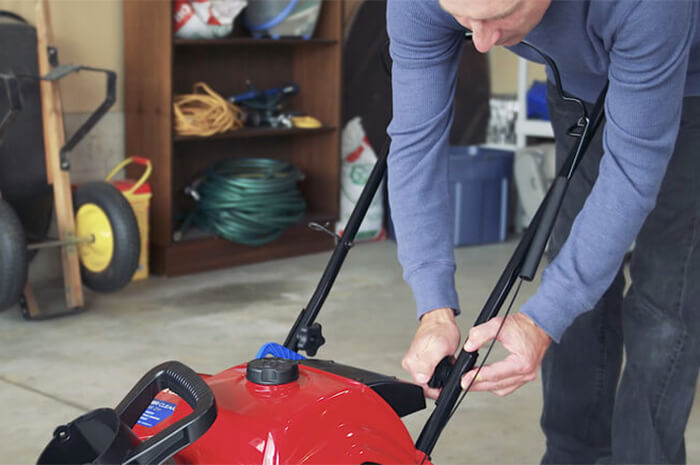
3 Essential Elements to Look for in Your Fertilizer and Why:
Grasses require at least 16 different essential elements for healthy growth, most of which are provided by the grass’s surrounding environment. However, three of these elements, nitrogen (N), phosphorus (P) and potassium (K), are needed in larger quantities and may require you to apply fertilizer to sustain healthy, vigorous turf.
Nitrogen (N)
Nitrogen is the mineral nutrient required in the greatest quantity. Not only is nitrogen responsible for enhancing the grass’s deep green color, but nitrogen is also an essential component for the proteins and enzymes that provide for the sturdy growth and shoot density needed to out compete weeds and to stand up to and recover from diseases, insects, and traffic. Learn when and how to apply fertilizer.
Phosphorus (P) and Potassium (K)
In addition to nitrogen, your lawn may also need phosphorus and potassium. Phosphorus, which tends to remain in the soil, is necessary to aid root growth and improve establishment rates. Potassium, which can be prone to leaching into the soil, enhances grass resistance to cold, disease, drought, and wear.
Depending on where you live, your soil may naturally contain adequate levels of these elements. A soil test is necessary to help you determine which nutrients your soil needs. It is important that only the required nutrients be applied because excessive amounts of phosphorus can end up in surface water and potentially lead to eutrophication.
Be aware of your state laws and local ordinances, some places have banned the application of phosphorus to turf unless soil tests show it is needed and other places have seasonal restrictions of any fertilizer applications. However, if the soil test shows that you need phosphorus and/or potassium, it is important that you apply them.
How to Read a Fertilizer Bag
The numbers on a bag of fertilizer tell you what percentage of N-P-K is contained in the bag. For example, a bag of 20-10-10 is 20% N, 10% P, and 10%K. Therefore, a 50-pound bag of 20-10-10 contains 10 lbs N, 5 lbs P, and 5 lbs K. The remaining 30 pounds may consist of additional elements such as iron and sulfur and inert “filler” ingredients. Remember, if you live where there are restrictions on phosphorus applications to choose a fertilizer with zero phosphorus such as a 19-0-7 or a 24-0-11. Learn how to calculate how much fertilizer to purchase for your lawn.
When seeding your lawn, you may want to choose a fertilizer that does contain phosphorus if it is allowed under your laws. Phosphorus is important for seedling root development and other key cell processes, so choose a starter fertilizer with analysis such as 18-24-12 for improved seedling establishment.
What’s the Difference? Fast-Release vs. Slow-Release Fertilizer
Fast-Release Fertilizer:
Ammonium nitrate, ammonium sulfate, and urea are examples of quick-release forms of nitrogen. They provide rapid greening of the grass but also have drawbacks, as shown in the table below.
Slow-Release Fertilizer:
Slow-release forms of fertilizers reduce the amount of time you spend behind your spreader, last longer, and may save you time and money. Also, because they are released slowly, they have a reduced risk of leaving the site through runoff and leaching.
Slow-release fertilizers include those products that are either slowly soluble or water-insoluble nitrogen. The slowly soluble products are synthetic organic fertilizers manufactured in a way that slowly releases the nitrogen over time by manipulating the size of particles and sometimes coating them. These slowly available forms include IBDU, methylene ureas, sulfur-coated ureas, and poly-coated ureas. The water-insoluble sources include both synthetic organics, like urea formaldehydes, and natural organic materials, such as activated sewage sludge, processed manures, and plant-based meals.
Advantages and Disadvantages of Slow-Release vs. Fast-Release Fertilizers
| ADVANTAGES | DISADVANTAGES | |
|---|---|---|
| SLOW RELEASE | ||
| Nitrogen released gradually | Higher initial cost | |
| Less apt to leach | Dependent on warm weather for release | |
| Low incidence of burning | Takes longer for turfgrass to respond | |
| Fewer applications needed | ||
| Lasts longer | ||
| FAST RELEASE | ||
| Nitrogen available immediately | More apt to leach, especially on sandy soils | |
| Generally costs less | More apt to burn foliage | |
| More reliable release rate | May raise salinity of soil | |
| Releases even in cold weather | Lighter, more frequent applications required | |
Note – Determine the type of fertilizer you have by reading the guaranteed analysis on the bag. Note that many fertilizers have a combination of both fast-release and slow-release types of nitrogen. You should check carefully to find products that derive a majority of their nitrogen from slow-release sources.



